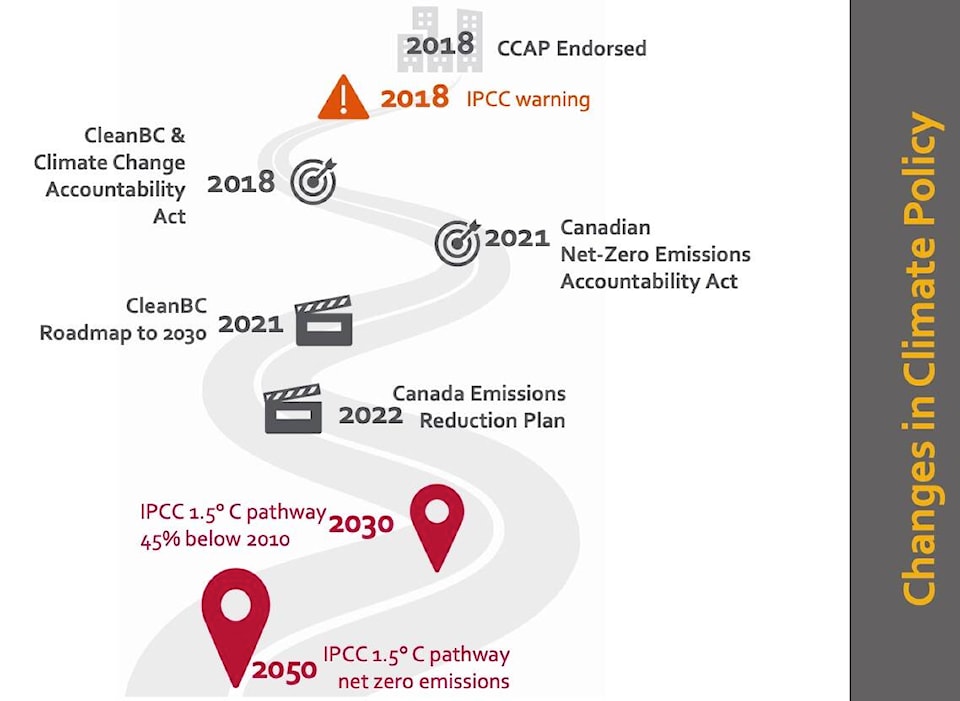Determining Kelowna’s progress in reducing greenhouse gas (GHG) emissions has been challenging, according to the city’s sustainability coordinator.
In a report to council Monday, Traci Guidi said the issue is data availability.
“As part of a recently completed modelling study, emission inventories were updated for 2007 in 2016 and a new inventory was created for 2018.”
Guidi noted emissions can vary widely year over year and monitoring is crucial to establish trends. Kelowna reduced emissions by nearly four per cent between 2007 and 2016 but rose by nearly the same amount in 2018.
The biggest sources of emissions are transportation at 55 per cent and buildings at 37 per cent.
However, Guidi said some progress is being made.
“By 2018 the community achieved nearly a 17 per cent reduction in per capita emissions,” she said.
Provincial data to 2020 is coming later this year which will allow a more recent look at how the city is doing on reduction goals. In June 2018, council adopted the city’s Community Climate Action Plan (CCAP), a five-year document aimed at reducing GHG levels by four per cent by 2023, 25 per cent by 2033, and 80 per cent by 2050.
“Since adoption four years ago the city has made progress on implementing many of the 48 actions in the plan,” said Guidi. “They include development of an electric vehicle strategy, expansion of the city’s transportation network, and education and support for community energy building retrofits.”
Provincial and federal government targets have changed over the last several years, and in 2021 the federal government legislated new targets of 40 to 45 per cent emissions reductions by 2030 and net zero by 2050. City staff recommended updating Kelowna’s targets to match provincial targets of 40 per cent below 2007 emission levels by 2030, and achieving net-zero by 2050.
“Overall, the modelling shows the importance of the local implementation of provincial and federal climate policies, and that with additional action a 48 per cent reduction of GHG emissions is feasible in Kelowna,” added Guidi.
She also recommended updating the CCAP to the Climate Resilient Kelowna Strategy.
“It will address emission reductions, and will also prepare to adapt to the impact of climate change ensuring Kelowna is resilient in the future.”
Guidi added that taking aggressive action on GHG to 2050 could see a $2 billion saving for the community.
Read More: Polish and Ukrainian leaders land in Kelowna to give thanks for refugee relief
Read More: RCMP looking into ‘all possible scenarios’ in search for missing Kelowna woman
@GaryBarnes109
gary.barnes@kelownacapnews.com
Like us on Facebook and follow us on Twitter and subscribe to our daily and subscribe to our daily newsletter.
